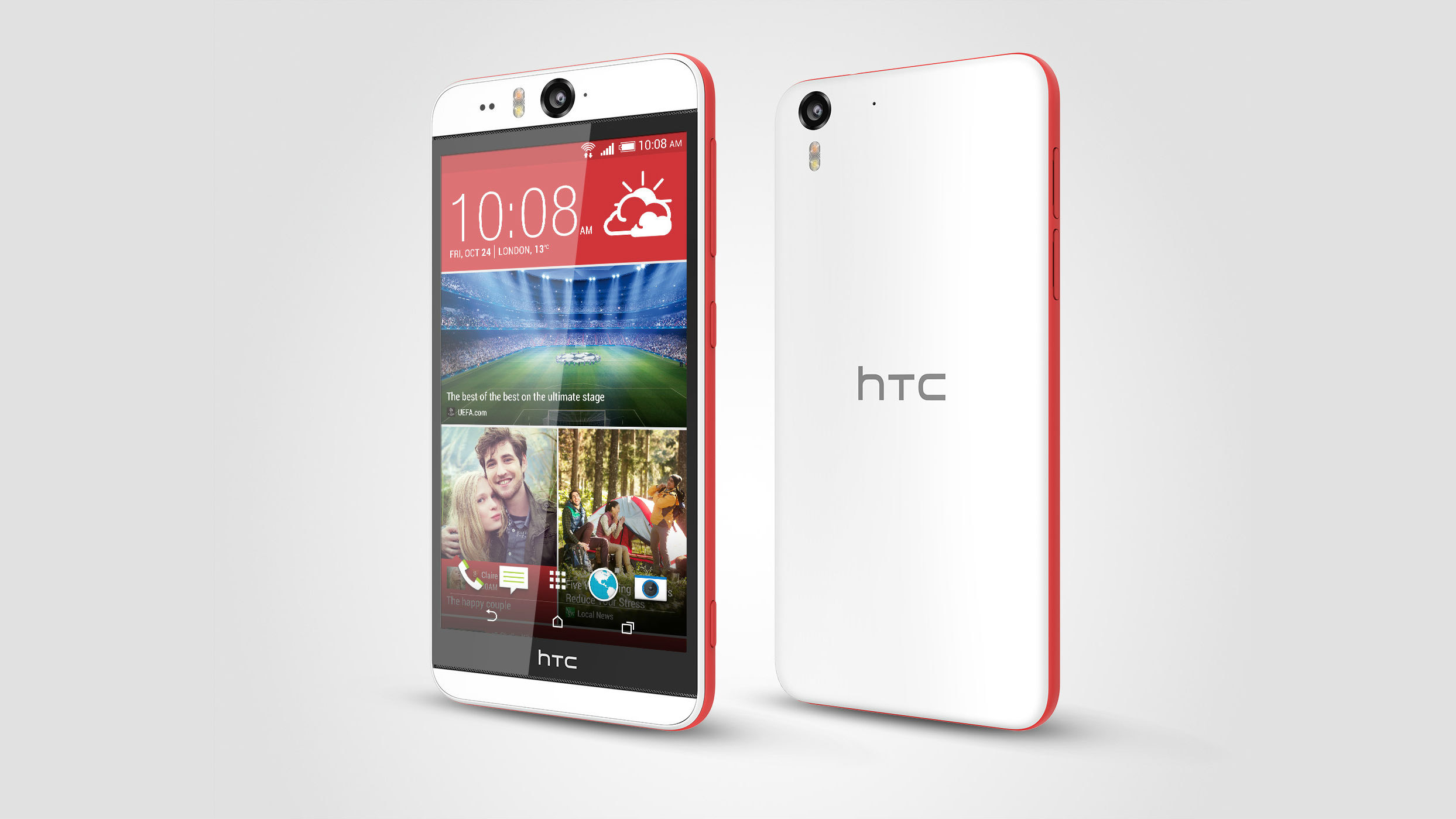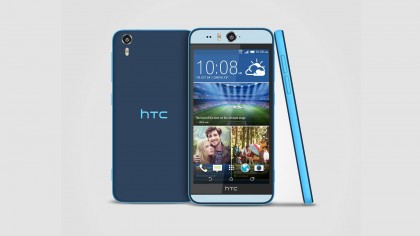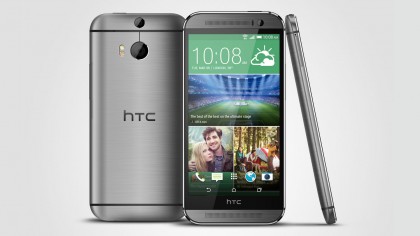HTC Desire Eye vs HTC One M8
It's an HTC showdown

The HTC Desire Eye might not be part of the Taiwanese company's One series of flagship devices, but the new handset doesn't skimp when it comes to specifications. And the front-facing 13MP camera is certainly going to appeal to photography fans.
HTC is positioning the Eye and a slightly lower tier and as such, the chief differences are in build quality, certain software features and the price. Although the HTC One M8 is gunning for the Android top spot alongside the LG G3 and Samsung Galaxy S5, the Desire Eye's approach is to put selfies front and centre.

So, while the HTC One M8 is a better all-rounder, the Desire Eye has a clearer selling point and a specific, targeted audience. How do the two phones stack up against each other?
Screen
If its screen real estate you want, then the Desire Eye edges it out over its older cousin. Despite being a Desire branded phone, HTC has given the new handset a Full HD 1,920 x 1,080p 5.2-inch display. That's an extra two inches over the HTC One M8's Full HD 5-inch screen.
The advantage is obviously that when using the Eye's front-facing camera for selfies, you get a larger screen for a bigger picture. However, when it comes to the detail on each display, the M8 can offer 441 pixels-per-inch against the Desire Eye's 424.

Neither display suffers from annoyingly large bezels, and both handle contrast very well indeed. One advantage the M8 boasts though is Corning Gorilla Glass 3 protection.
We're going to have to go with the size issue here though and that extra two inches means the Desire Eye takes the prize for the better screen.
Sign up for breaking news, reviews, opinion, top tech deals, and more.
Design
There are no prizes here for guessing which phone comes in with the better design. The HTC One M8 was praised upon released for the refined aluminum chassis and comfortable 160g weight.
The Desire Eye, by contrast, is made from a polycarbonate case and available in a choice of two different colors. Although HTC has added IP67 waterproofing, the Desire Eye doesn't feel as comfortable or as premium as the One M8.
The front-facing Boomsound speakers, instead of existing as visible grilles have become a small strip between the screen and the chassis. Although, a definite plus point for the Eye is that HTC has added a physical camera shutter button to the right hand side of the device.

Even so, when it comes to design, HTC's premium One M8 smartphone remains the better choice here for both comfort and aesthetics.
Price
We're still waiting to hear on what the pricing will be for the HTC Desire Eye, although we can say for some certainty that it'll be lower than the starting price of the One M8.
This makes the Eye the better choice if you're looking for a budget phone. Although it's worth pointing out that the HTC One M8 can be had for a good price if you take some time to shop around.
Power
When HTC revealed the One M8 earlier this year, it was the most powerful phone in the company's stable. On paper, that might not strictly be true anymore.
Both phones use a quad-core 2.3GHz Qualcomm Snapdragon 801 CPU and both have 2GB of RAM at their disposal. Storage is likewise at 32GB for both and each has an Adreno 330 graphics.
The operating system for both phones is Google's Android 4.4 which has made improvements when it comes to efficiency and power consumption. But, as with every HTC phone ever, you get the company's own Sense UI packaged on top. Thus, you'll find some unnecessary apps, like Power To Give in there, but also some useful features like the company's BlinkFeed news aggregator.
- 1
- 2
Current page: HTC Desire Eye vs HTC One M8: page 1
Next Page HTC Desire Eye vs HTC One M8: page 2